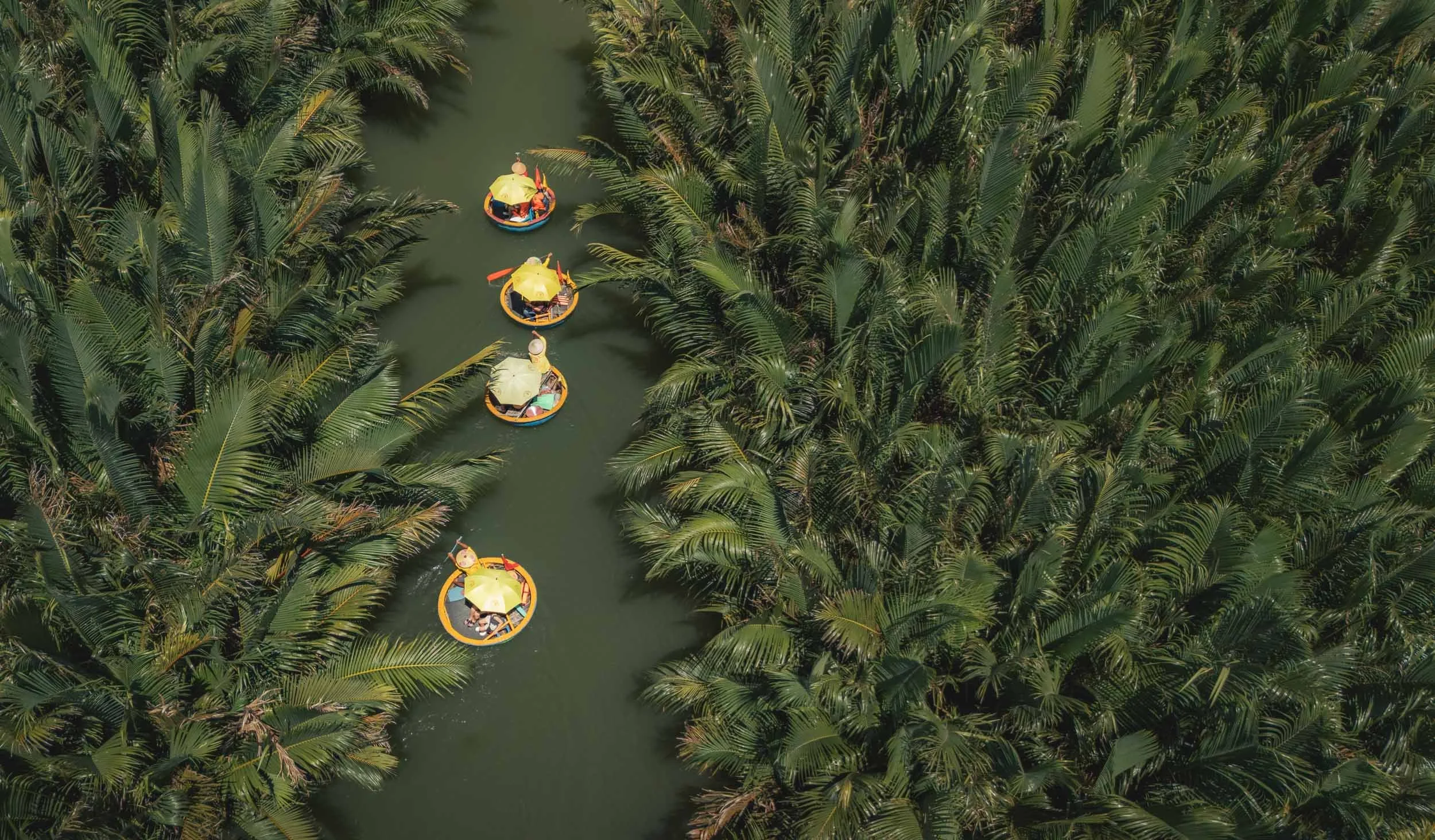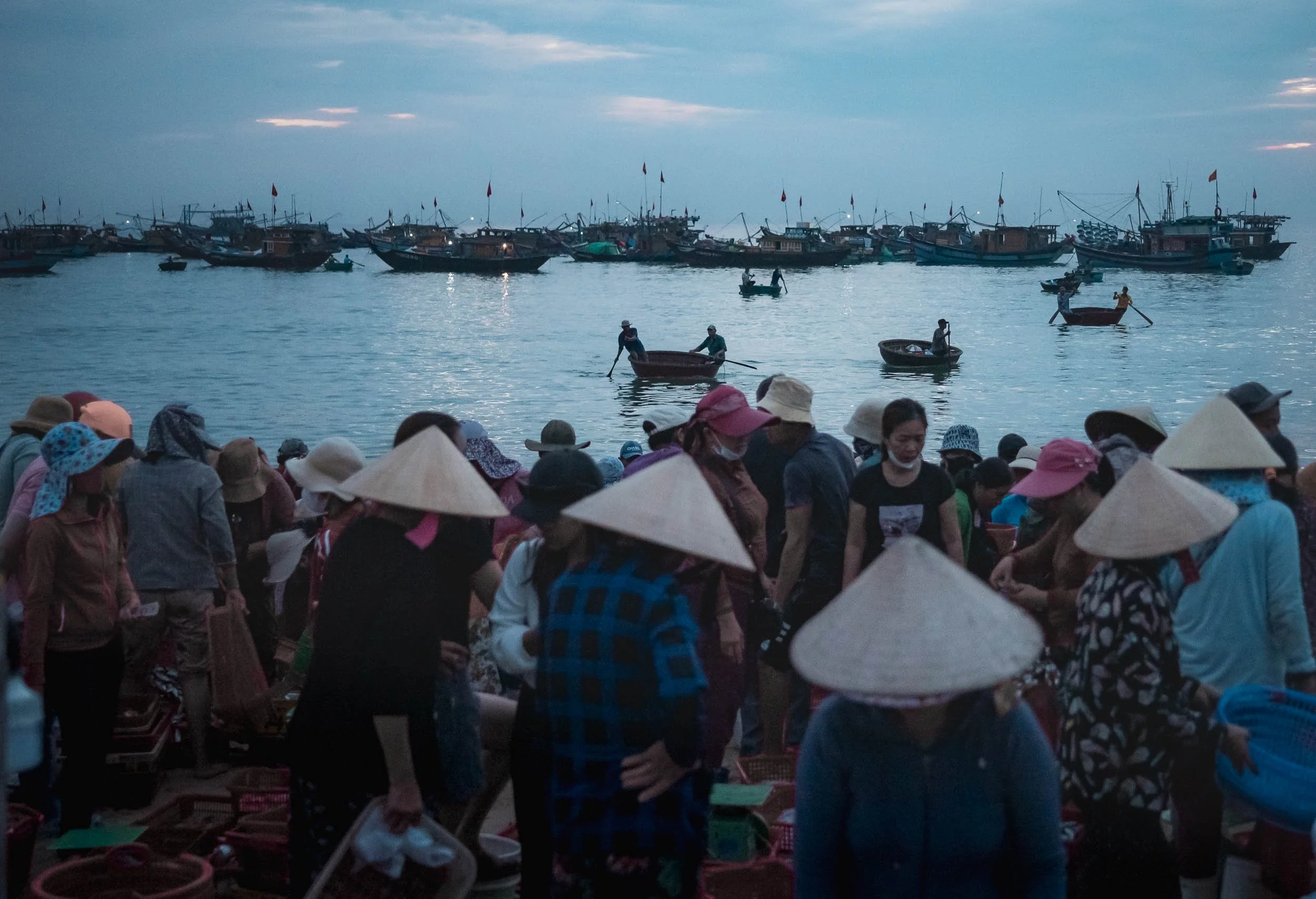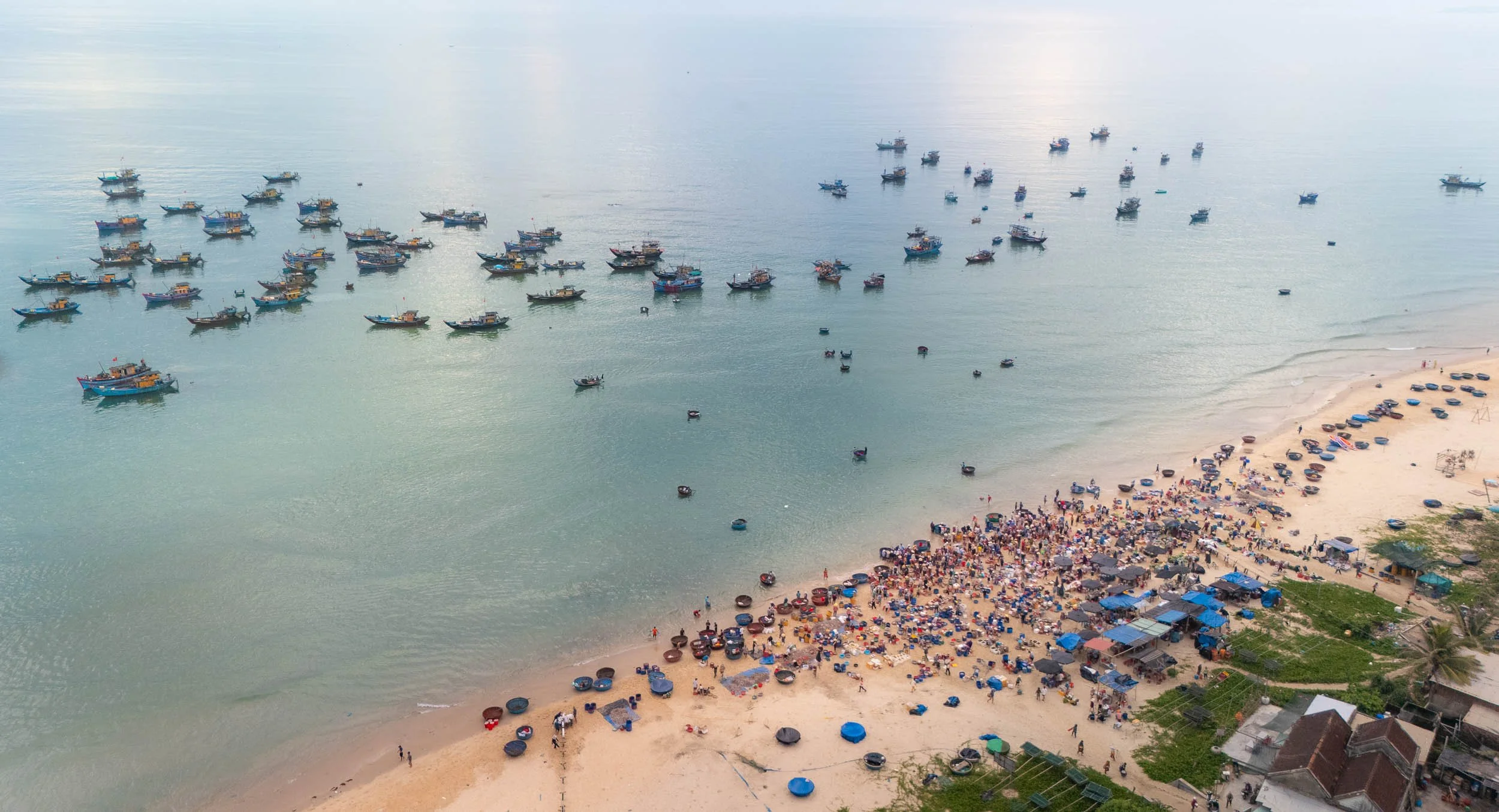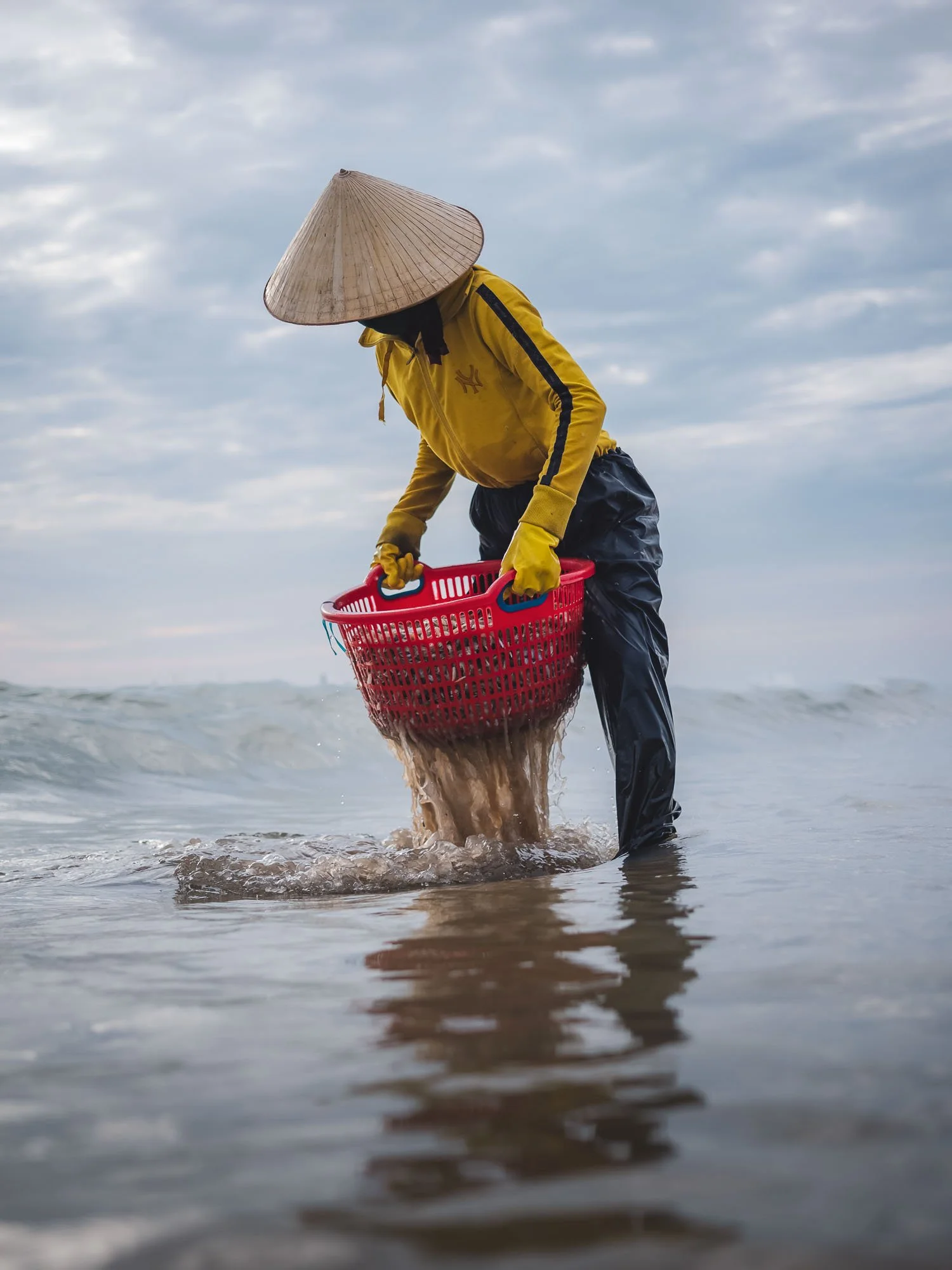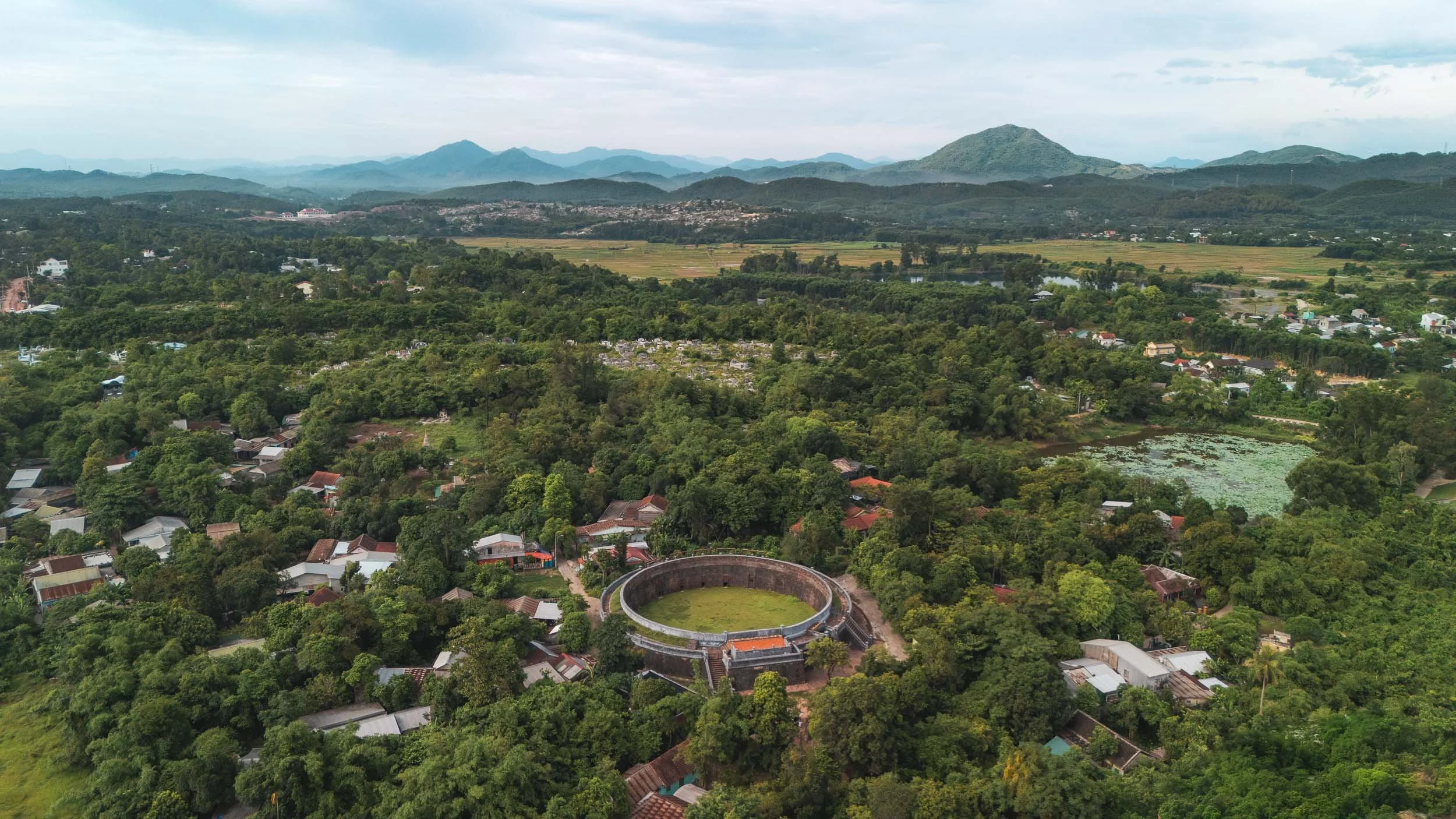Hue & Hoi An - A Glimpse of Central Vietnam
The sights of Hue and Hoi An were my focus for central Vietnam, where I only had a few days after covering the south and on my way to the north. One of my favourite countries in South East Asia.
Vietnam is one of my favourite South-East Asian countries, and for this reason I spent more time here than originally planned. Starting in the southern part of the country, I made my way north with a stop in the central cities of Hue and Hoi An. It was a short stopover, so the below blog covers just three days of exploring the sights here - but I already know there is a lot more to see, for example, the city of Da Nang (Vietnam’s Miami, so I heard and partly saw while driving through) and several amazing natural sights further inland. I still wanted to see the northern parts - blog coming soon - so some compromises had to be made.
If you want to get an overview of many of the sights I was able to cover during this trip, check out this video, which has aerial clips from southern, central, and northern parts of the country.
Hoi An - Ancient Trading Port
From the airport in Da Nang the first stop was the Bay Mau coconut forest just outside the city, to see its infamous basket boat rides. While today this place is definitely a tourist attraction more than anything else, many such sights are rooted in specific traditions of the past. This one is not so different.
The bamboo-made basket boats are actually part of the historic roots of Hoi An as a trading and fishing port, and while the stories of their origin vary, one interesting angle is that they were used to evade taxes that the French levied on “real” boats. Others say they developed as a way to easily maneuver during shallow water fishing - either way we will see them again later in this blog in a less touristy context.
If you look past the entertainment aspect of the captains twisting and turning their boats with quite remarkable skill, accompanied by a speaker blasting Gangnam style (yep), you can have quite a relaxing time here, and get an insight into the activity’s cultural background.
That’s because once you escape the beats and dancing of the main parts of the river - where admittedly both locals and tourists seem to have a lot of fun, although I can't quite say the same for myself - you can enjoy some of the more quiet side channels with their vibrant coconut groves, and things become a lot more relaxed.
From what the guide told me, the forest here covers almost seven acres (also the meaning of Bay Mau) and was started more than 200 years ago. It’s the combination of soil and brackish water that seems to have made it a fertile area for coconut. It was once also a hotspot for the resistance of the Vietnamese against the colonial occupation.
The forest is close to the sea along the Thu Bon river, a few kilometers from the old town. It’s worthwhile to visit, if you can appreciate the historic value in the context of today’s tourist activities.
Blue Nets
From here, I visited another place that is mainly driven by photographic opportunities for tourists than real day to day life - this is a theme in many of the famous places in Vietnam.
The iconic blue net mending scenes of Hoi An are rooted in the region’s traditional fishing culture, once a vital part of the so-called “Silk Road of the Sea.” Historically, it was often the women who repaired the nets after the men brought them back from the sea. While this practice still exists today, many of the images circulating online are staged - including these ones. Personally, I don’t feel strongly against this practice, these reenactments help preserve a visual heritage and generate income for locals. At the same time, they distort the perception of daily life and contribute to a growing uniformity and commodification in travel photography, with people chasing identical scenes simply to check them off a list. The trade off is probably somewhere in the middle and tourism is part of local dynamics in so many ways regardless, but generally I mostly avoid staged images, or at least declare them as such.
The inside of the house, where the ladies mend the nets when things are not set up for beautiful photos - with some joy either way it seems!
The fisheries at the Thu Bon river, with the house of the net mending ladies just on the left side.
As a piece of evidence indicating the importance of fishing and the sea for the locals, just to the left of the above panorama lies Bon Van Duy Vinh - a boat-shaped temple.
The Old Town of Hoi An
I spent the evening exploring Hoi An’s old town. The town’s history as a trading hub goes back over 2000 years, from the Cham people, to Portuguese and French influences, and Vietnamese rule, with later decline. Only a few decades ago the town was revived and became a UNESCO World Heritage Site in 1999.
In the evenings, the many bars and restaurants attract people, as do the colorful boats and the traditional lantern release on the river. A beautiful sight from the air, showing the clear distinction between the old town and the newer part of the city across the river bank.
From a closer angle, its rise from irrelevance came at a cost: nowadays, tourism around the old town and river areas have put significant pressure on the sustainability of the city and its surrounding marine ecosystem.
The city is famous for lanterns, especially the monthly full moon festival for prosperity and good fortune, honoring the ancestors.
Irrespective of the festival, they adorn many of the streets, handmade lanterns are for sale in several shops, and tourists release small floating versions with candles in the river (with questionable environmental consequences).
Away from the river, I got a few glimpses of the mixed traditional architecture and chessboard-pattern streets that made the old town famous.
It’s a colorful but crowded affair, and I told myself I’d come back the next morning to see it under a different light…
Tam Tien Fish Market
But before that, it was a very early start to reach the fish market of Tam Tien, around an hour south of Hoi An.
The market flurry starts at 4am or so, and slowly dies out after sunrise. It runs from April to September, but closes during the monsoon season.
This was also my second encounter with the basket boats - this time not for touristic use, but their original purpose: bringing the nightly catch from the larger boats docked off the coast directly to the beach - it’s a bumpy journey, even in calm waters.
It is mostly the women who are then responsible for preparation, negotiation and sales, while the men go back and forth to transfer the fish between the boats and the beach. Things happen quickly, and most of the haul is picked up by buyers within just a few minutes.
While the market feels very traditional, it was only established about 20 years ago or so. Initially, the boats just anchored here after returning from their nightly mission until a few business-minded fishermen realised they could sell the freshest fish to buyers directly on the beach. It’s now the largest fish market in the Quang Nam Province.
To keep the catch cold, the community installed a metal track to send large chunks of ice from the road down to the beach.
I took some of my favourite photos of the trip here with the drone, capturing the colorful activities on the shoreline from above. A worthwhile visit, with very few tourists around - so far.
We made our way back to the "peaceful meeting place" - the translation of Hoi An from Sino-Vietnamese. I was keen to see the city during the day, and the early hours also meant there were very few people around.
The many rooftop cafes were a good place to get a view of the typical narrow and deep two-story houses, often mixing the local traditional architecture with wooden porches and some colonial influences.
A Chinese influence are the community halls, such as Fujian Community Hall from 1792, with its courtyard and decorated gardens.
One of its most iconic architectural sights is the Japanese bridge - currently covered and under renovation because it is at risk of sinking due to erosion. It was established in the late 16th century by Japanese merchants to ease the crossing of the canals connecting different city districts. A small temple with ornate decorations was added in the centre later, but little is visible with the current works going on.
As I walked back to the hotel, I stopped in a small antiquities shop and got talking to the owner. When he found out I was German, he proudly showed me his copy of Faust, which he had been reading - and quoting from - in Vietnamese, no less. After a brief philosophical exchange, during which I couldn’t help but wonder why anyone would voluntarily read Goethe’s novels, while I was busy recalling my dread of them back in school, I had to head off to my next destination.
Huế
And that destination was Hue, another ancient city once belonging to the Cham people, before Vietnamese rule, where it was an Imperial City. It is also home to a UNESCO site…
.. which is in fact a complex of multiple different monuments, spread over several square kilometers along the bank of the perfume river (named after the seasonal orchards that are carried in the river water).
Like Hoi An, it includes features from the Vietnamese dynasties, Chinese influence, and also some colonial French aspects.
As I arrived at the Meridien Gate, some young women were posing in traditional dresses and gave me the chance to take a few photos of them with the backdrop of the 1833 entrance to the Imperial City.
The site is huge with many different tombs, shrines, palaces, and other remnants of the time when Hue was the capital of unified Vietnam in the early 19th century - you could easily spend a full day here, which I unfortunately wasn’t able to do.
The Thai Binh Lau (Peace Pavilion) above within the Forbidden Purple City, with its beautiful ornamentation restored in the early 1990s. The entire complex features green gardens and a large moat surrounding the area, seen below.
Details of the buildings, often featuring lattice windows and ceramic statues with colorful painted decoration.
Kiến Trung Palace
Architectural details of one of the main palaces of the site, combining traditional and colonial influences. Originally built in the early 1900s, it was destroyed during the Indochina wars, and then reconstructed just a few years ago.
In fact, a lot of the complex has been destroyed during the Indochinese wars, but restoration projects are ongoing. On the other hand, its current state - especially in moody weather and around the wilder parts - admittedly gives a kind of intriguing Indiana Jones vibe to the area.
Lantern Release
As the light faded, I had one more short photographic scene on the agenda - and it was another famous “Vietnam setup” that is often seen on social media - a more picturesque version of the river lantern release in Hoi An.
A cute idea, but little to do with the reality, as we’ve seen.
I did however get to see this super intense sunset over Hue - nothing artificial about this one.
Before heading to the airport for a flight to Hanoi, I had one more rather unusual and less well-known sight on my agenda, maybe the only one of its kind. While Hue is home to several historic sites spread all around the region, including a number of beautiful temples and pagodas, this one is without comparison.
Hổ Quyền (Tiger Arena)
Barely visited, this relic lies just a few hundred meters from the perfume river, and was home to one of the most intense (and cruel) spectacles of the Nguyen dynasty. In the second half of the 19th century, gladiatorial battles between elephants and tigers took place here during yearly royal festivals.
For better or worse, its doors remain closed today, unfortunately also for visitors, so the best perspective of what the arena looks like is the aerial view.
Apparently the complex was built after several incidents during previous festivals, where elephants trampled people and tigers escaped, going after spectators or the royal attendees.
The original purpose of these fights was to train the elephants used in battle, but it later became a purely entertainment-driven event.
The last festival took place in 1904.
While exploring the surrounding areas (which include a rather beautiful old temple and mausoleum) I encountered this gentleman, and he kindly showcased his craft: producing amazing hand-carved wooden elements for the various restorations.
And with that impression of how much work must have gone into some of these sights, I made my way to the airport. Stay tuned for a future blog post covering the north of Vietnam, with amazing tea plantations, limestone landscapes, and of course the country’s capital.


